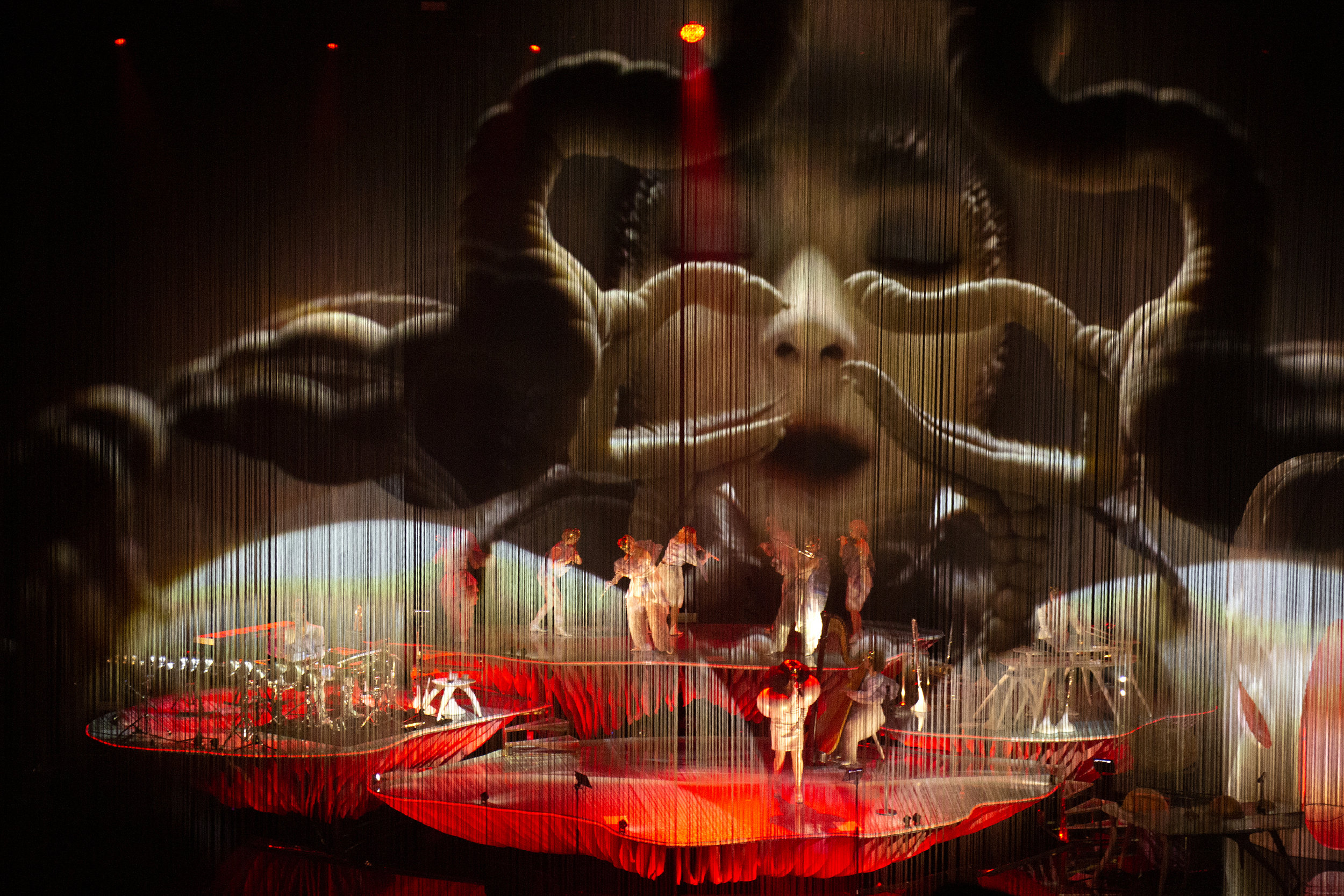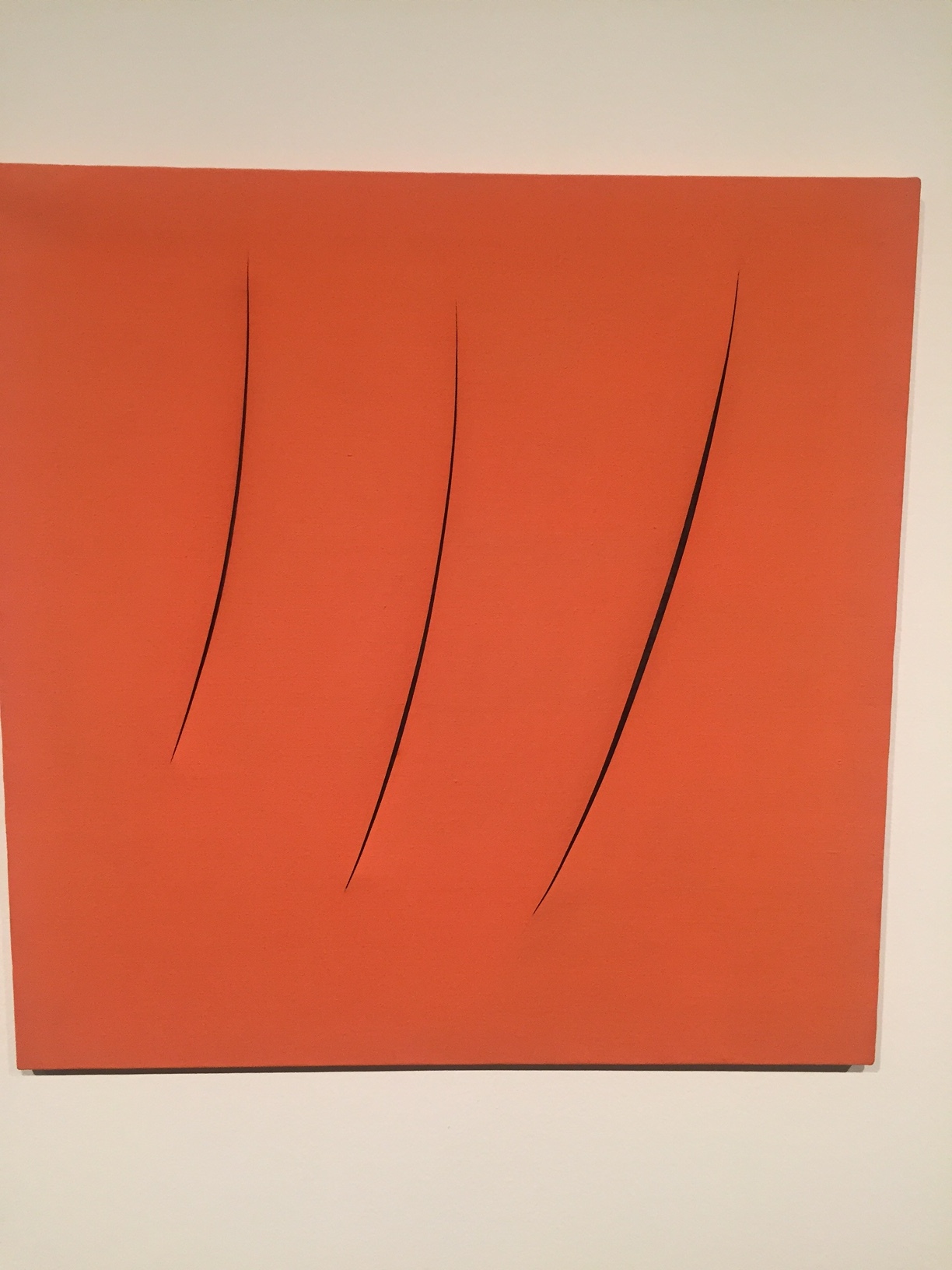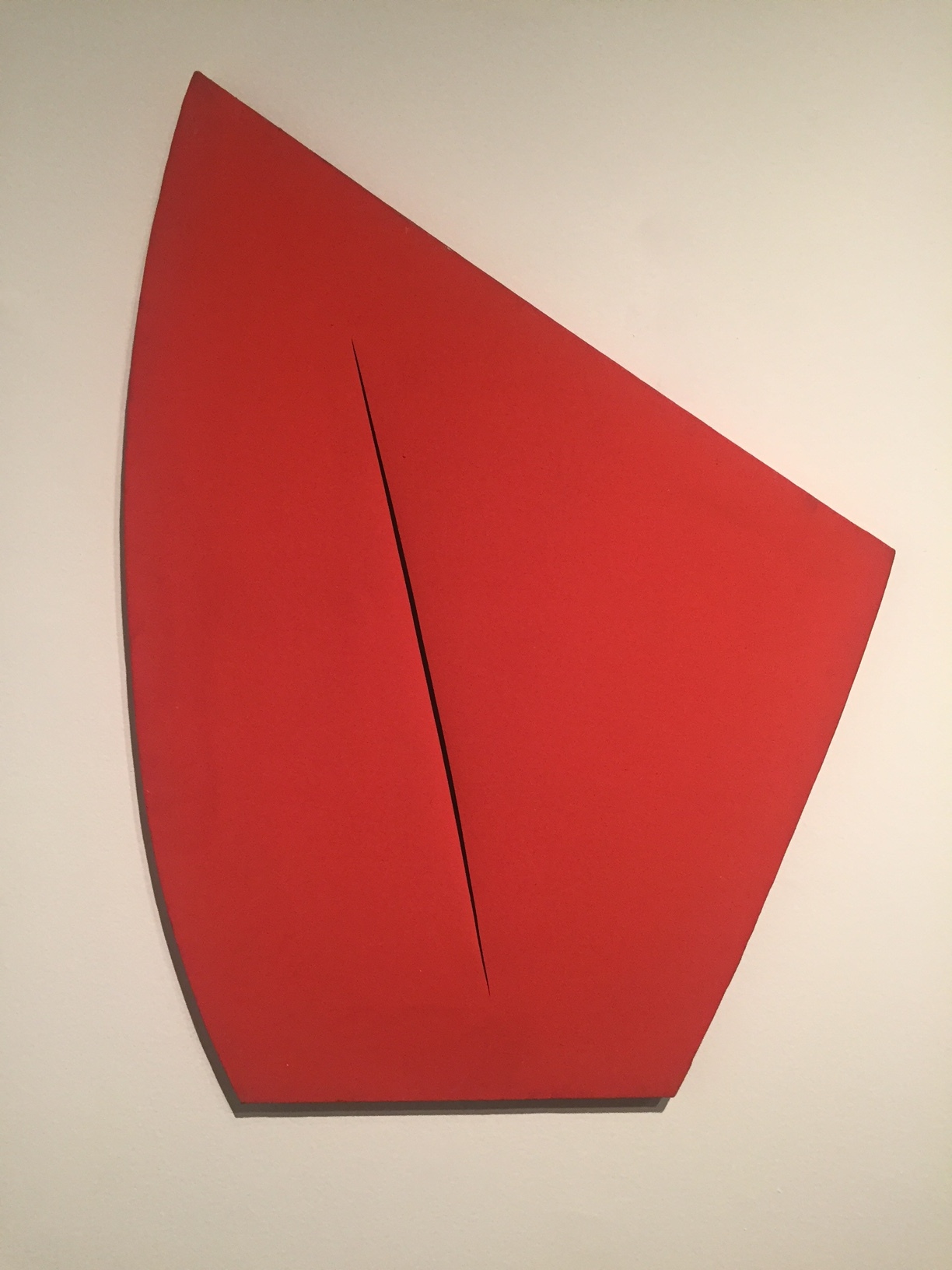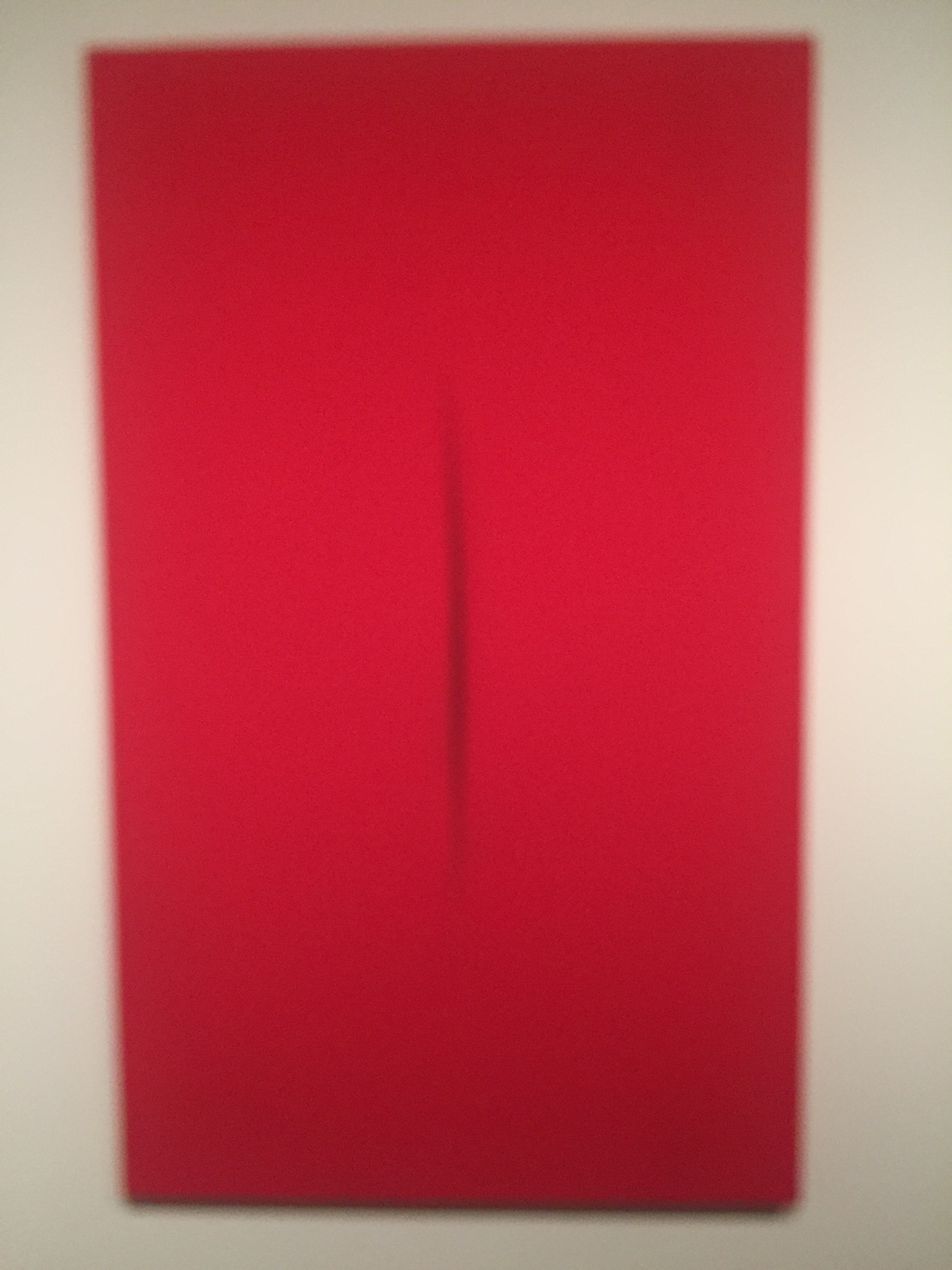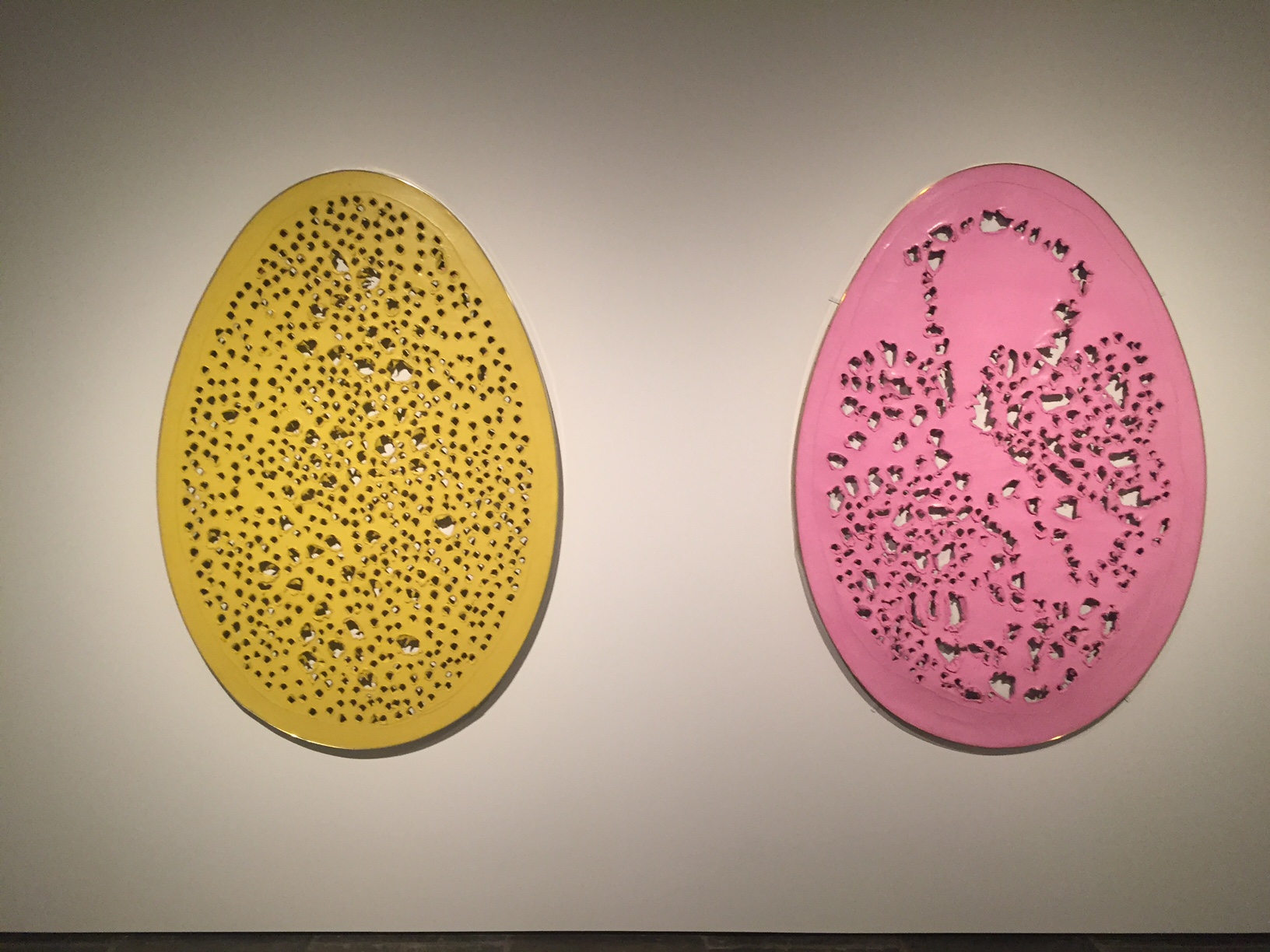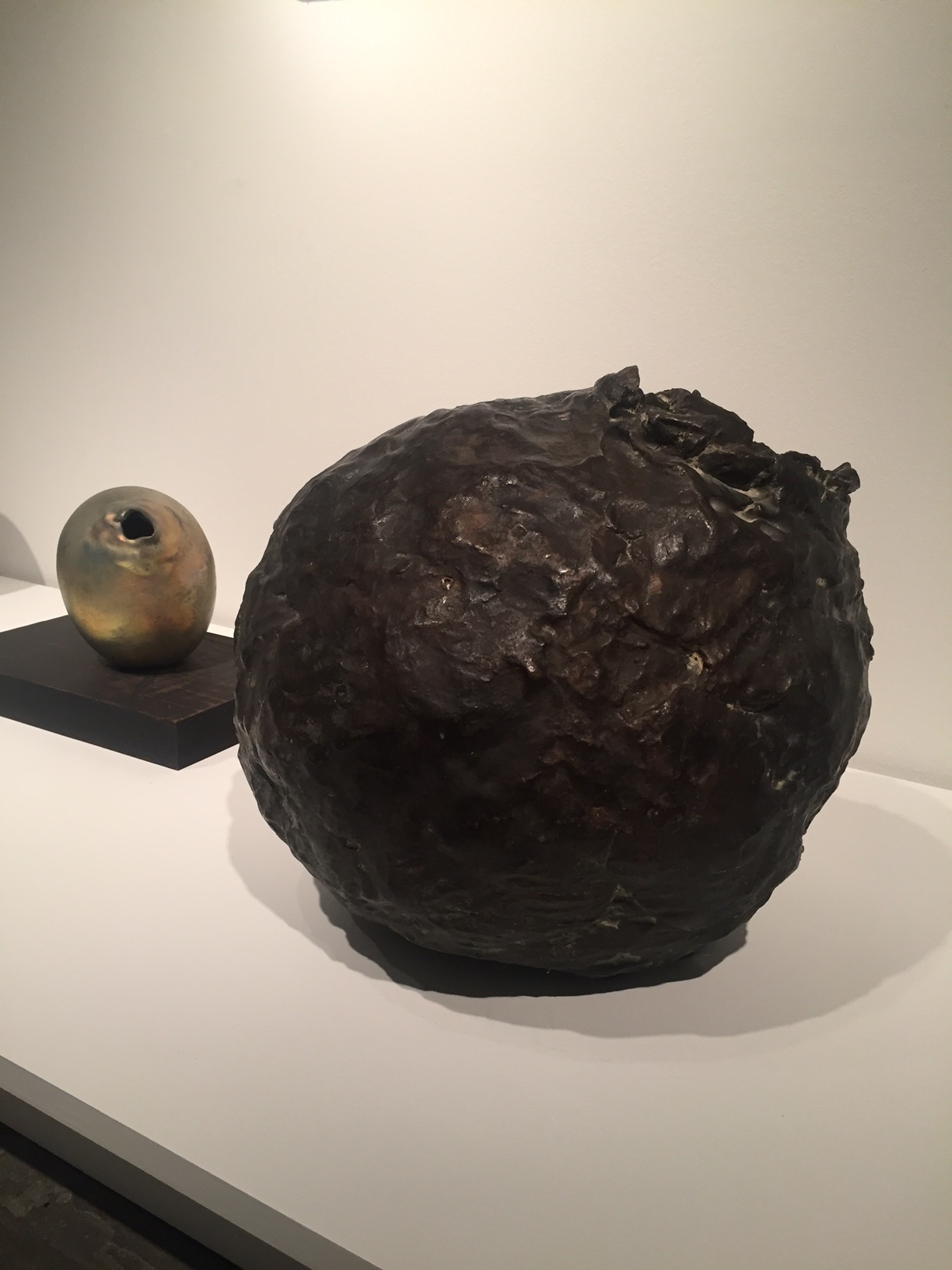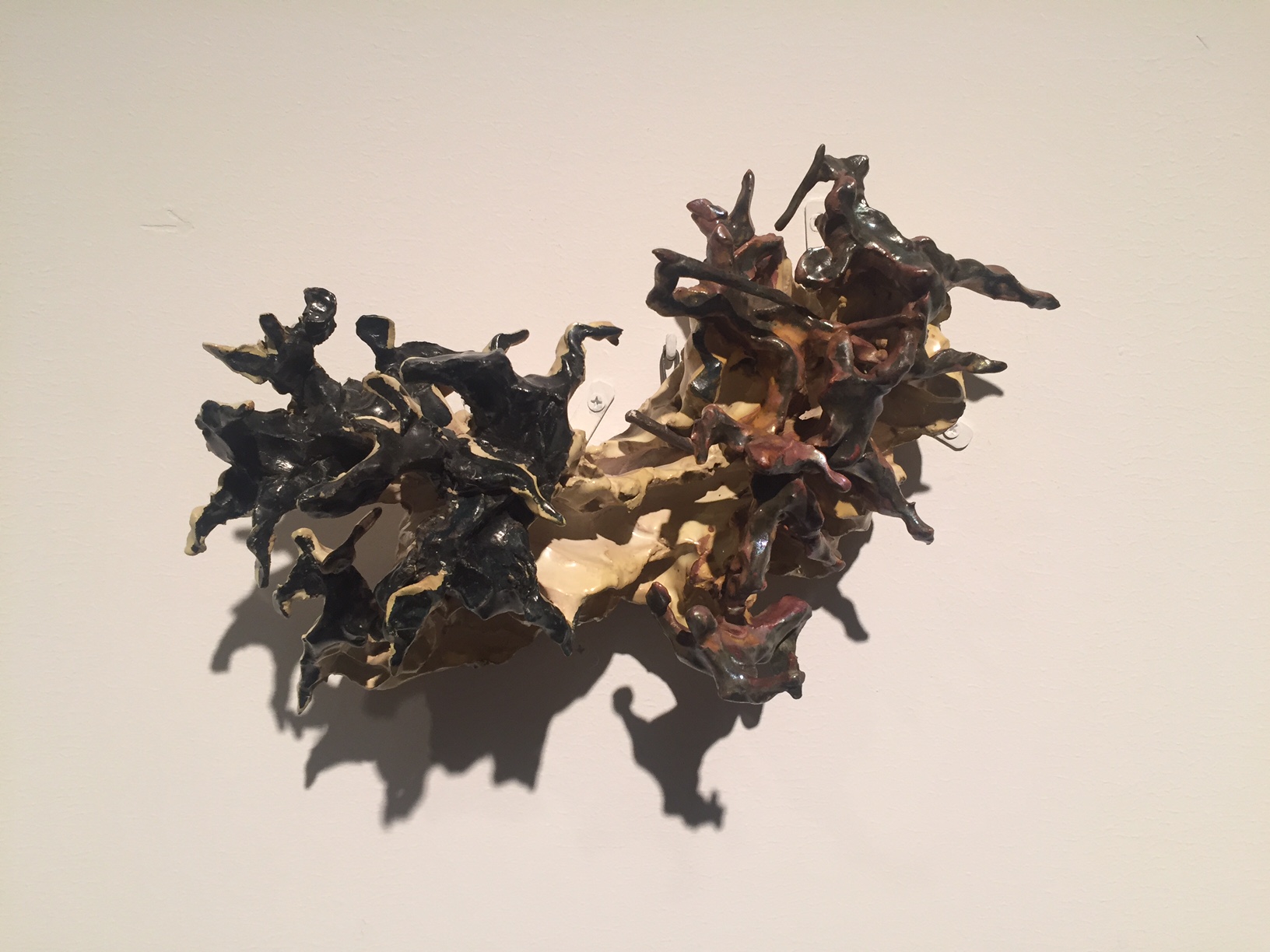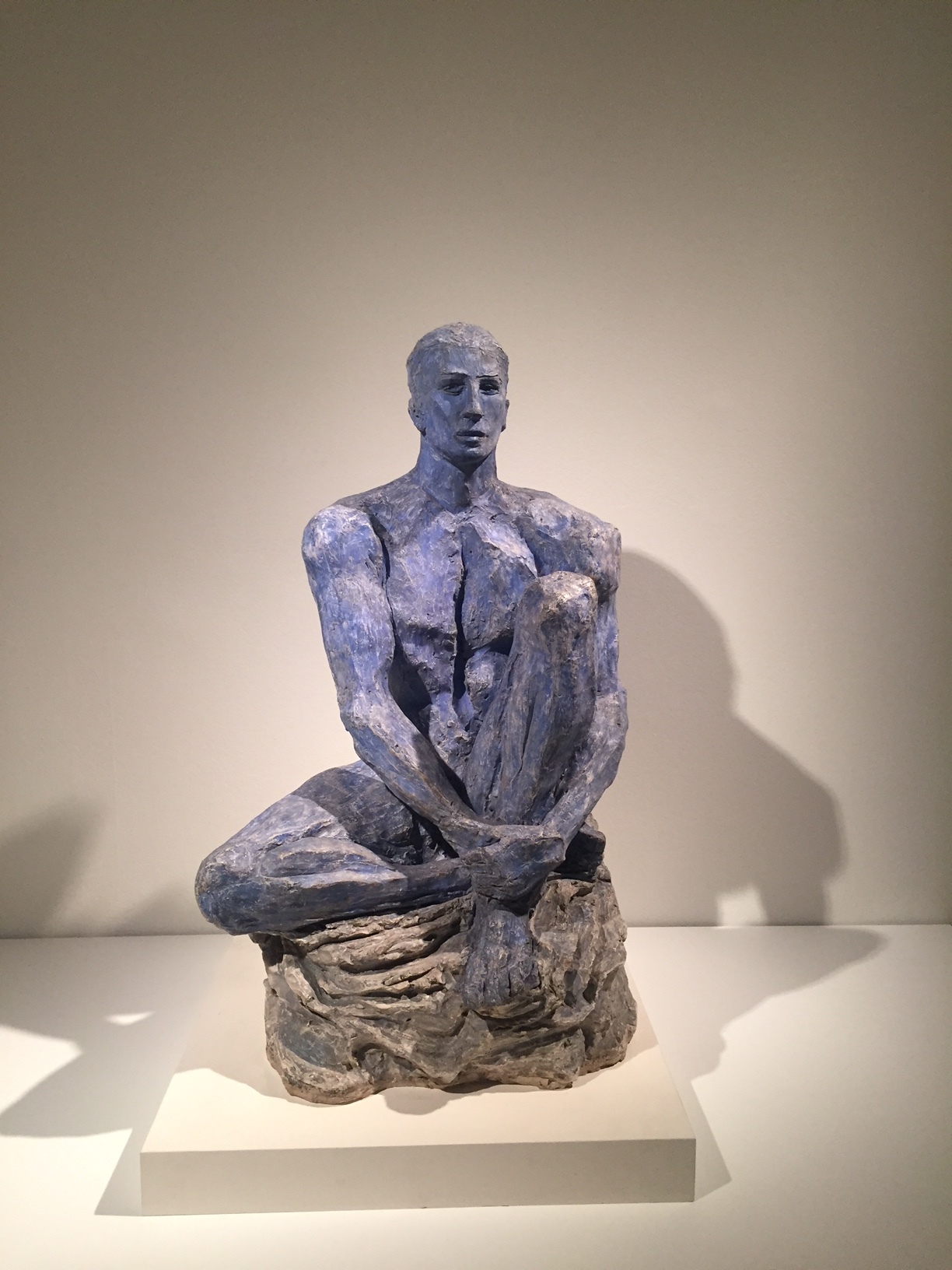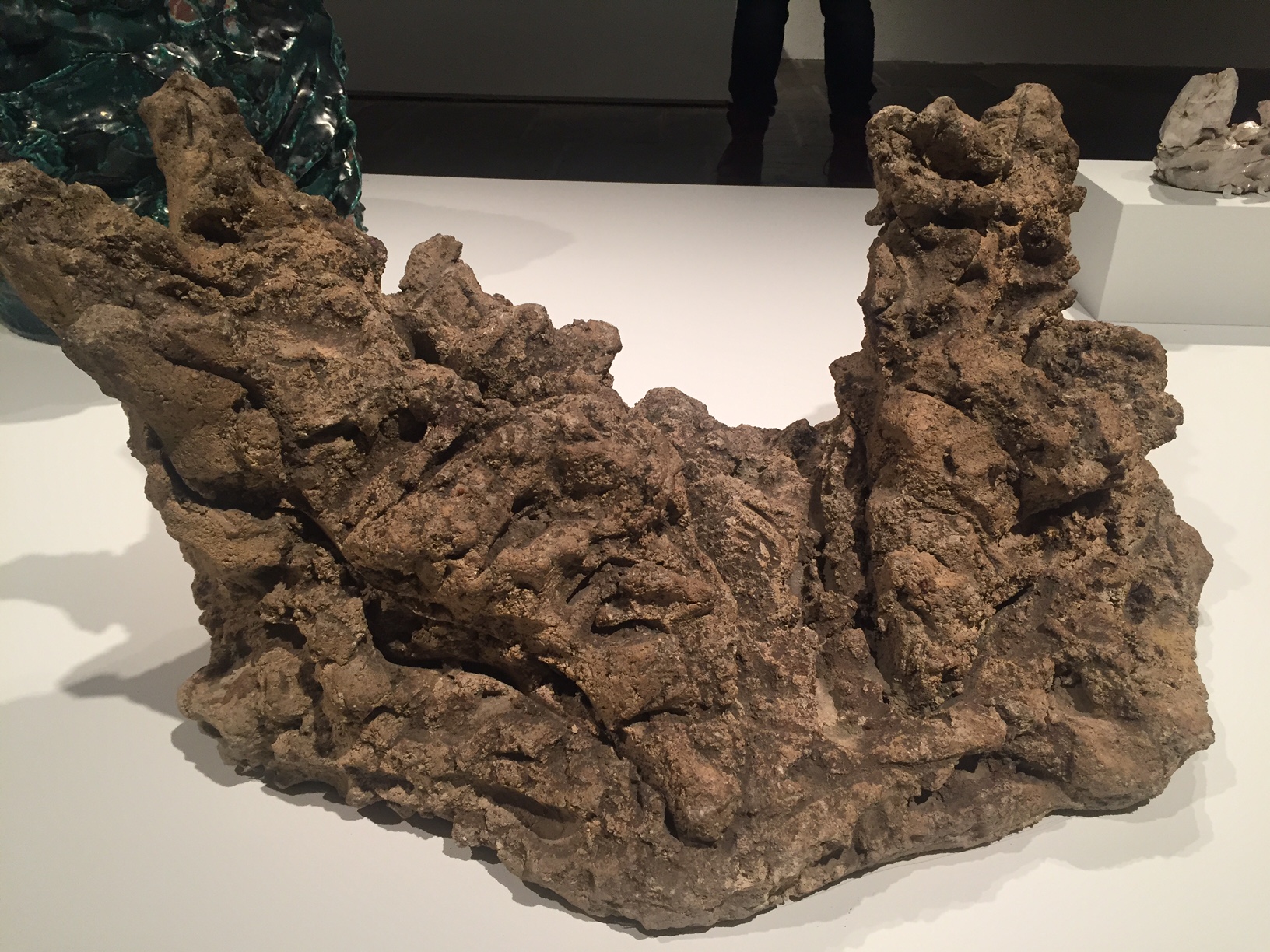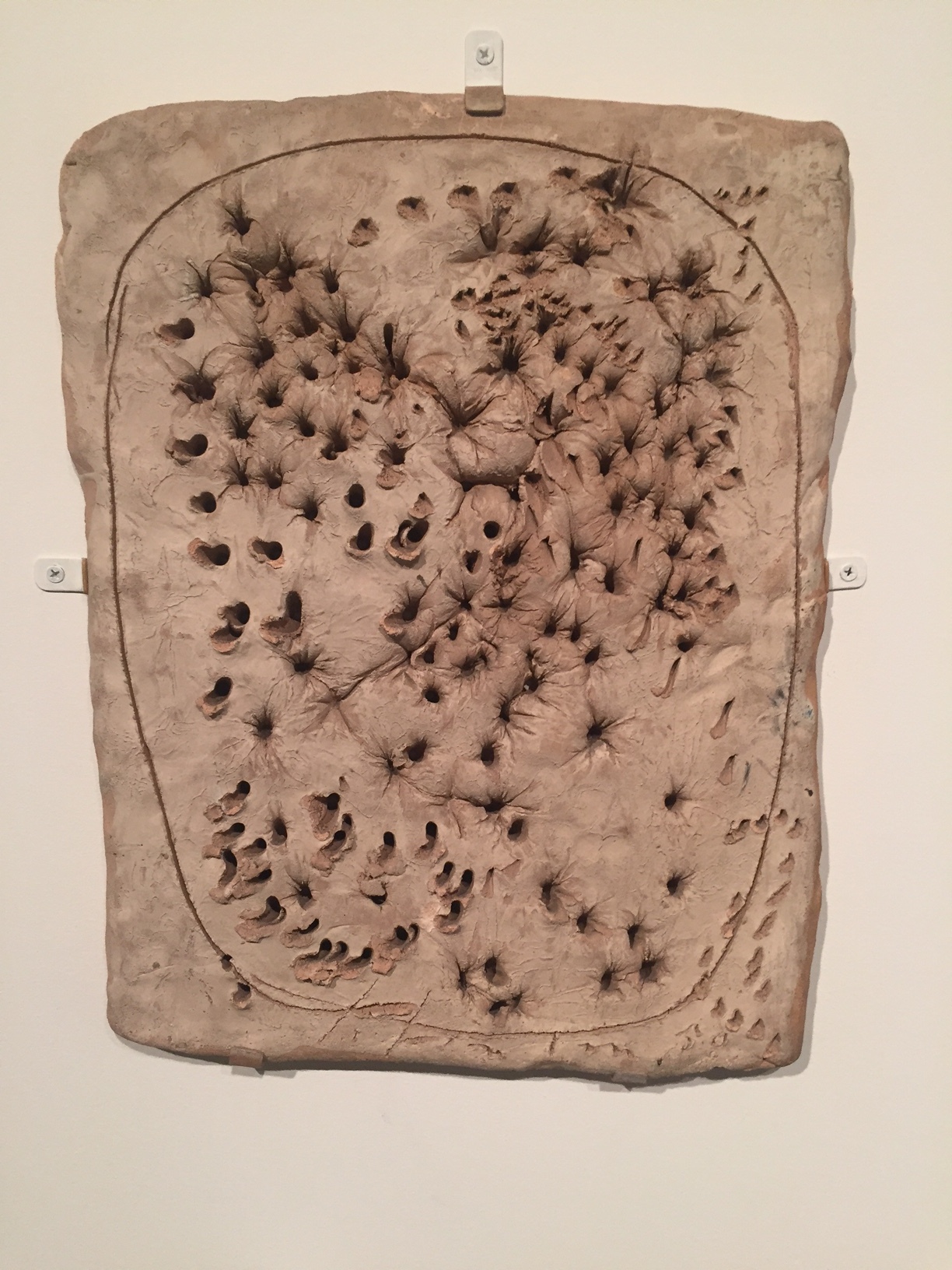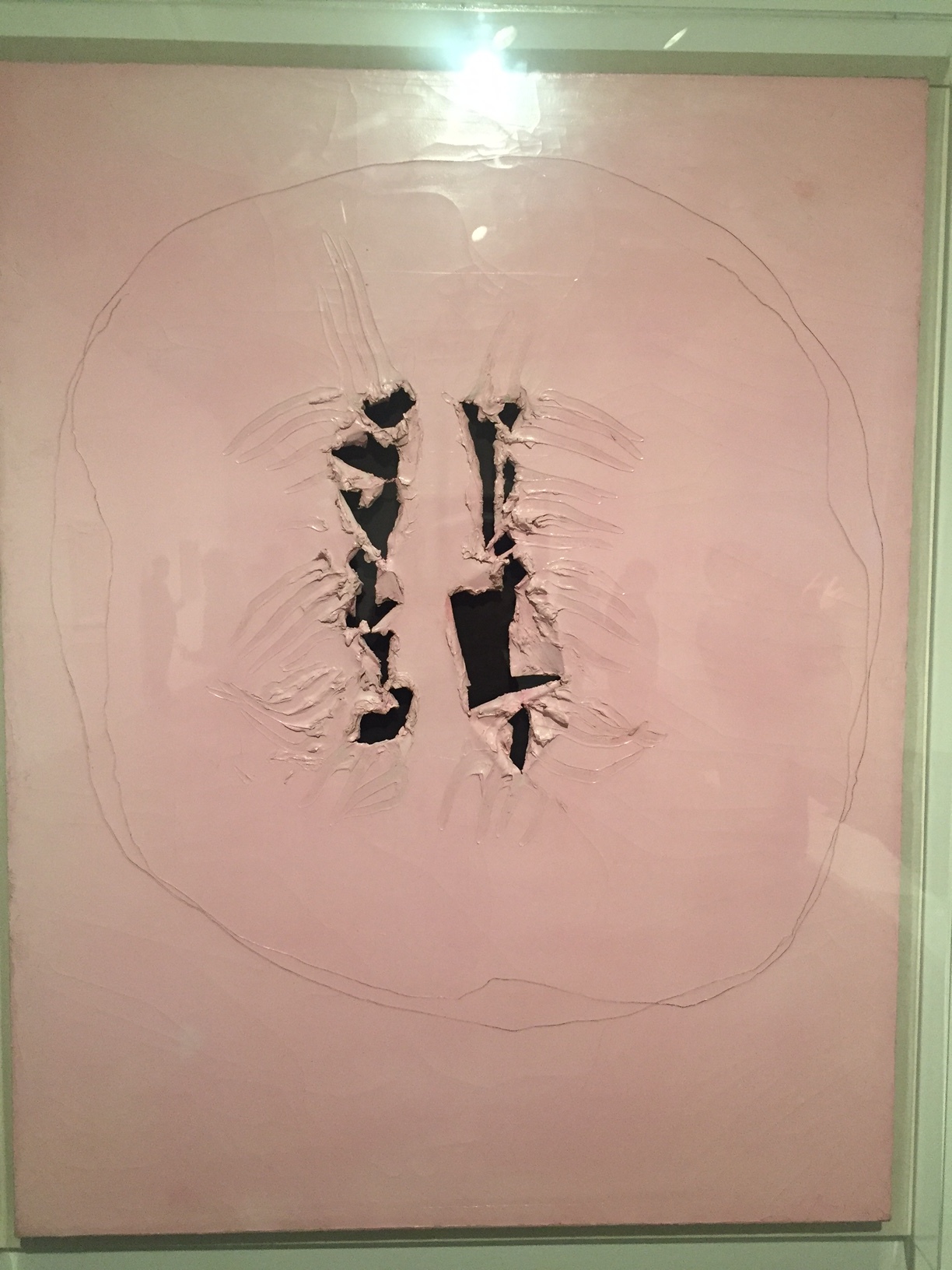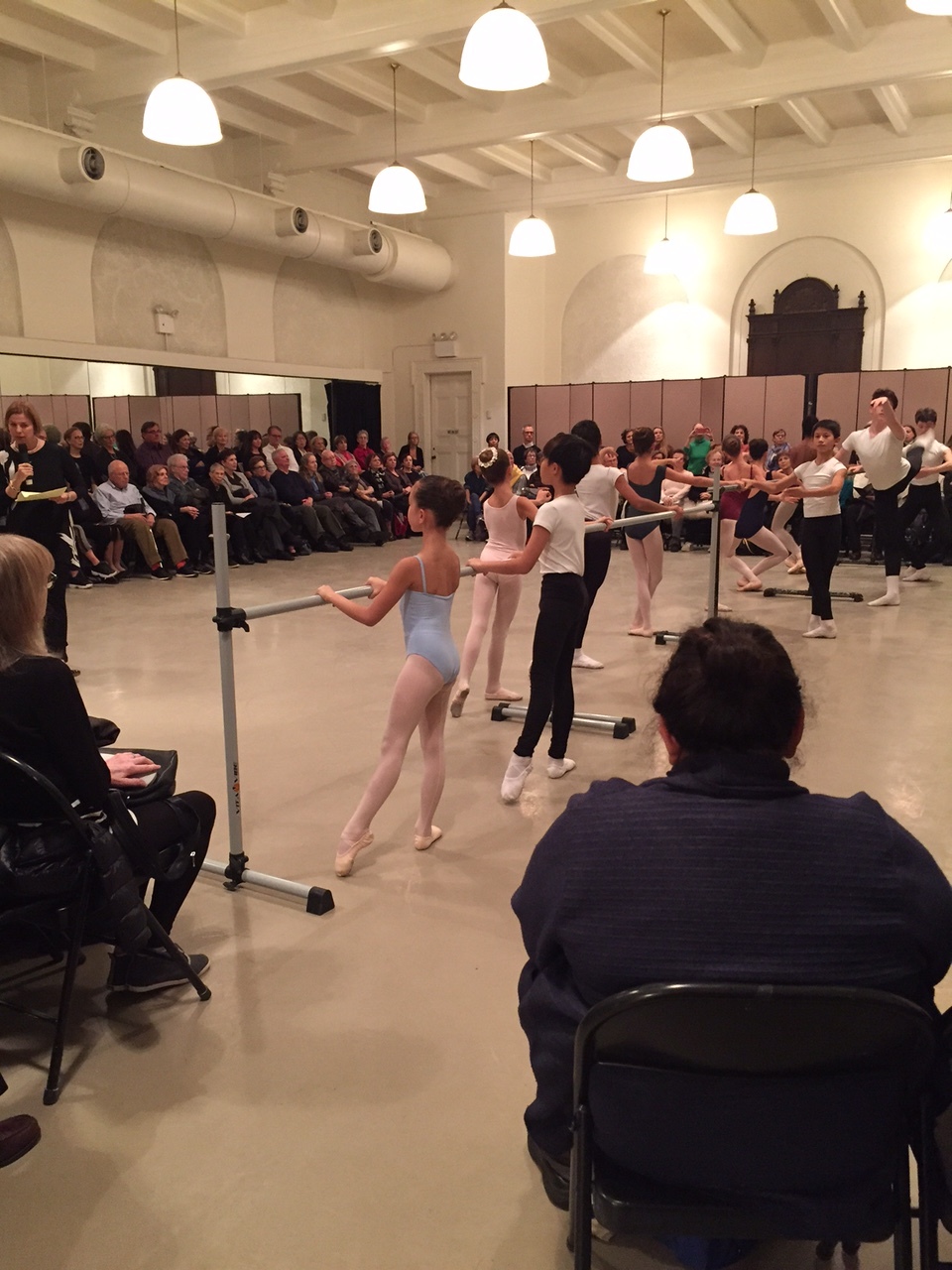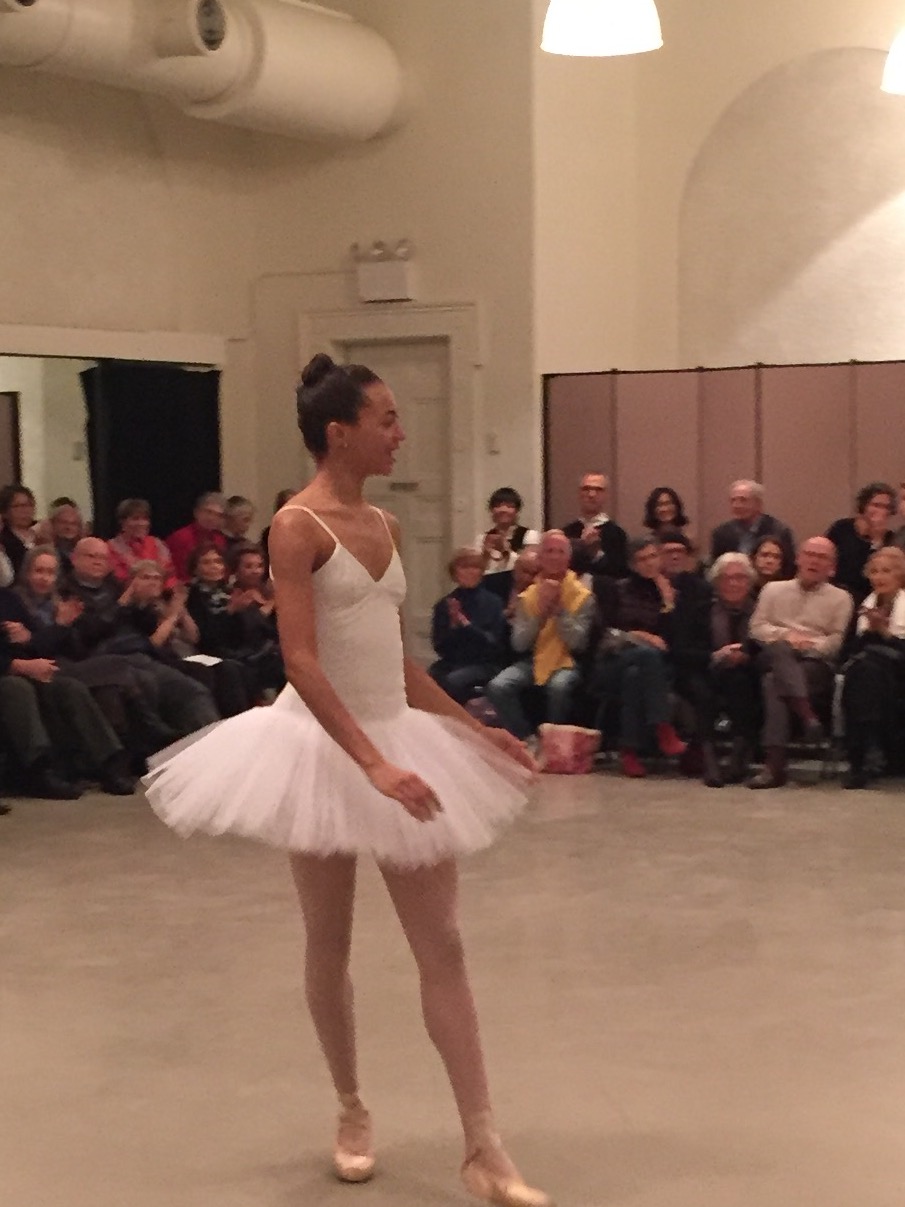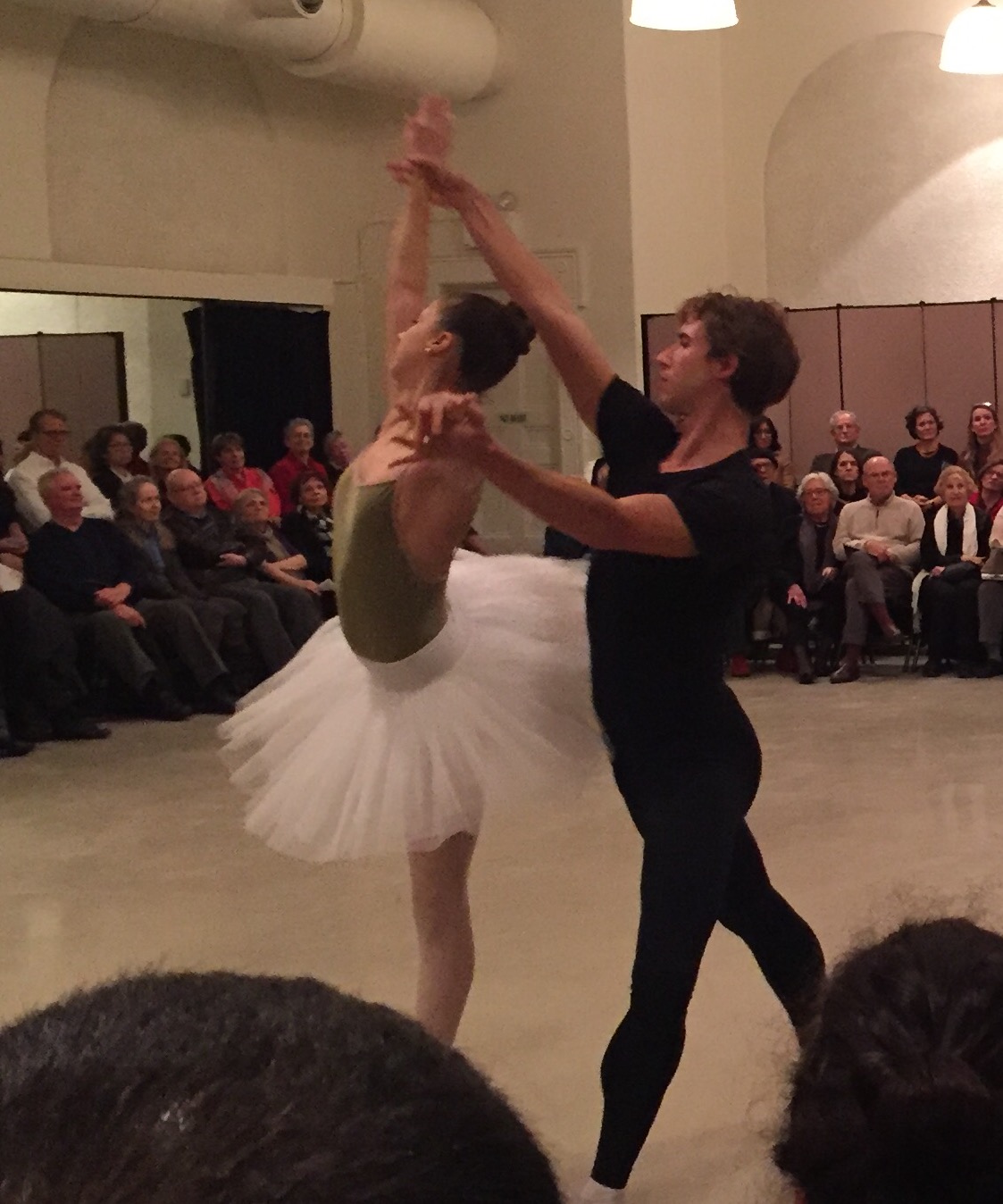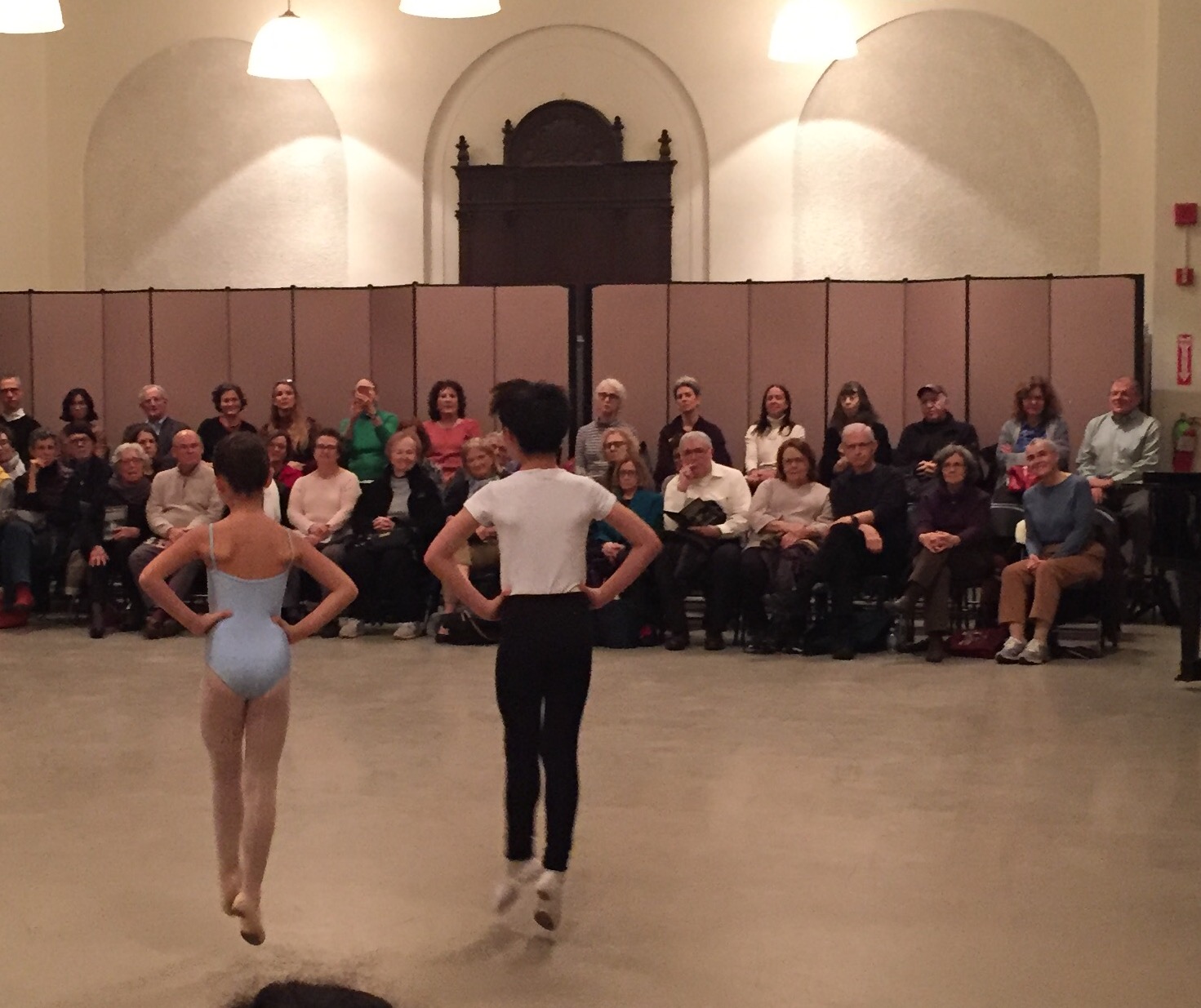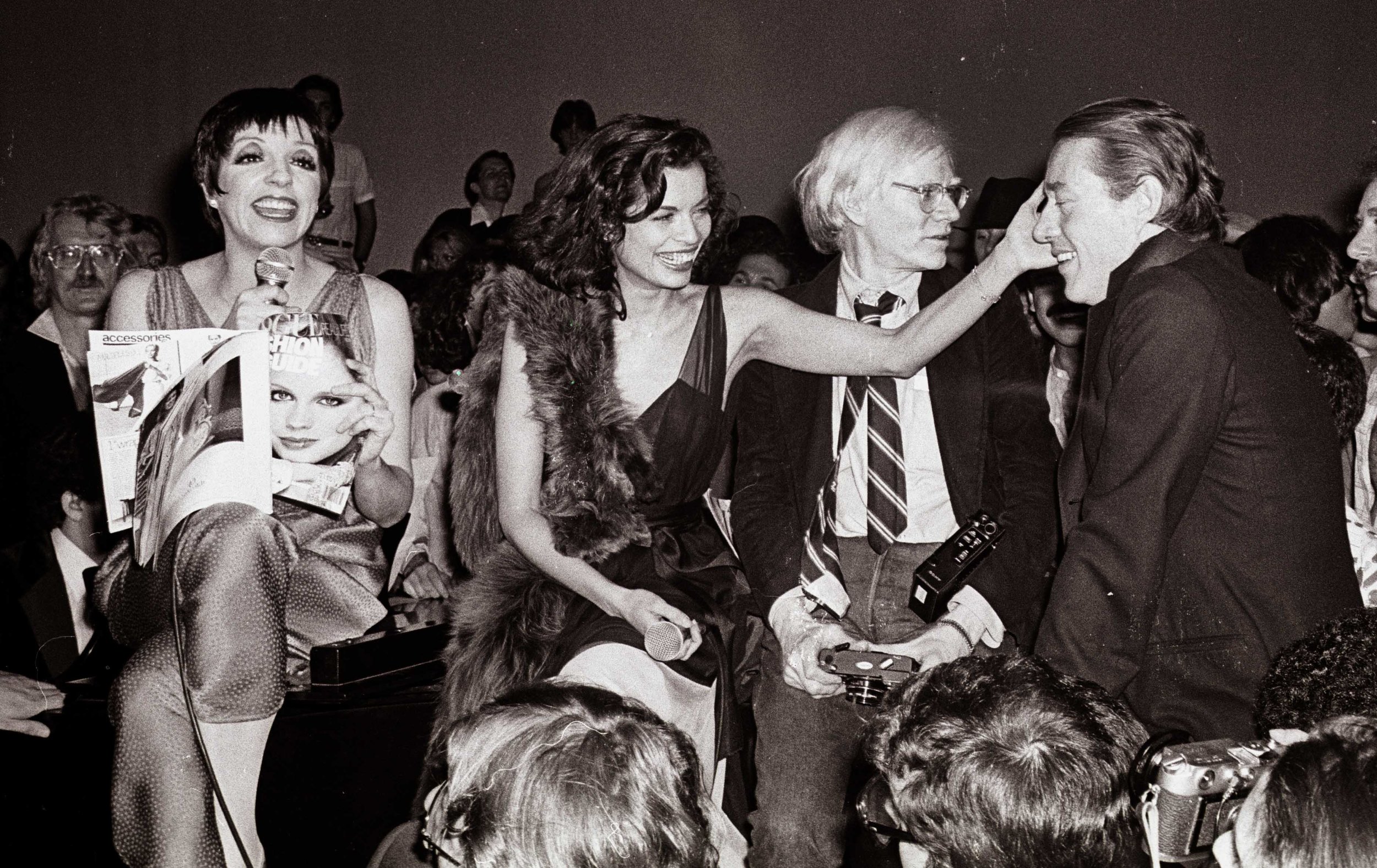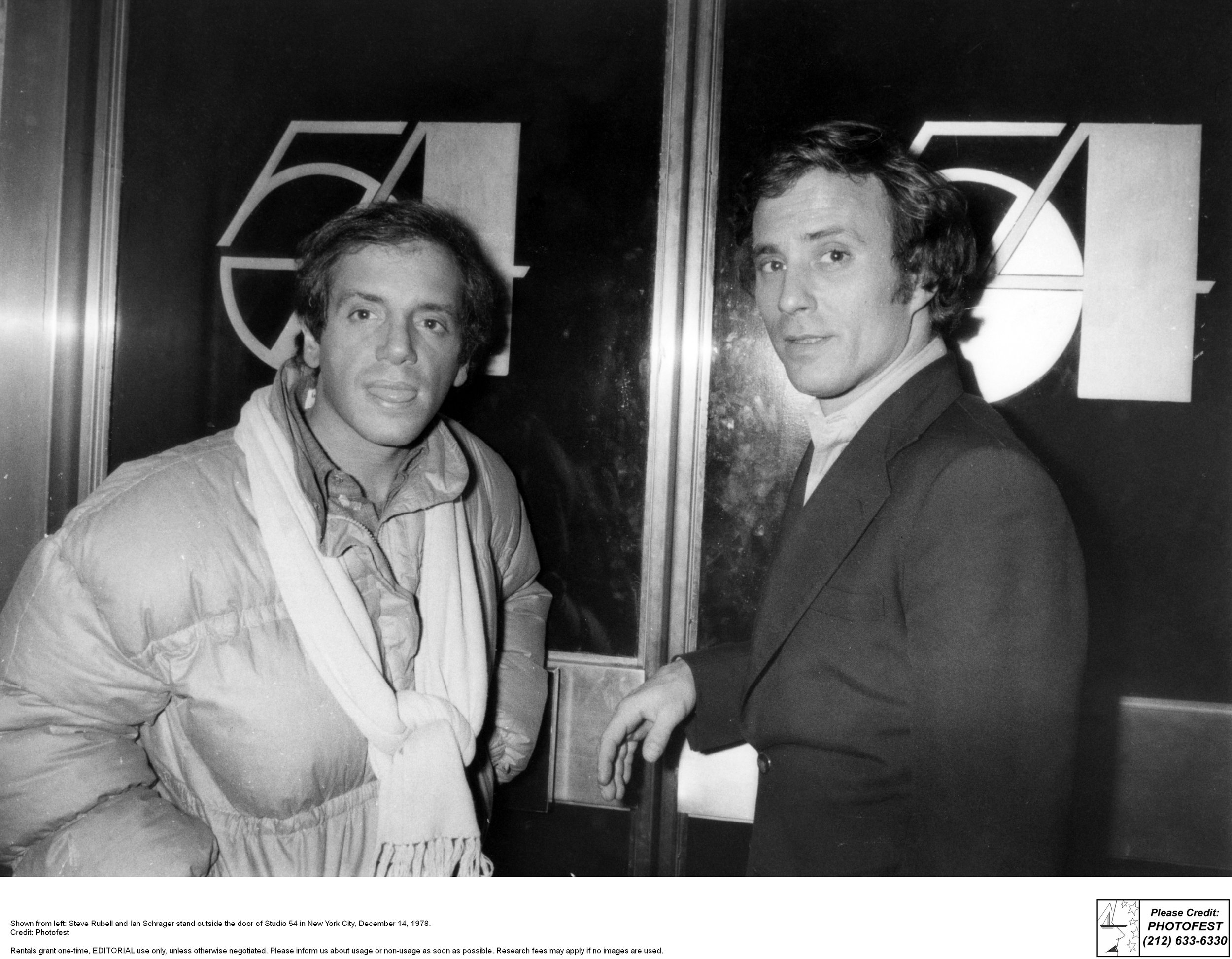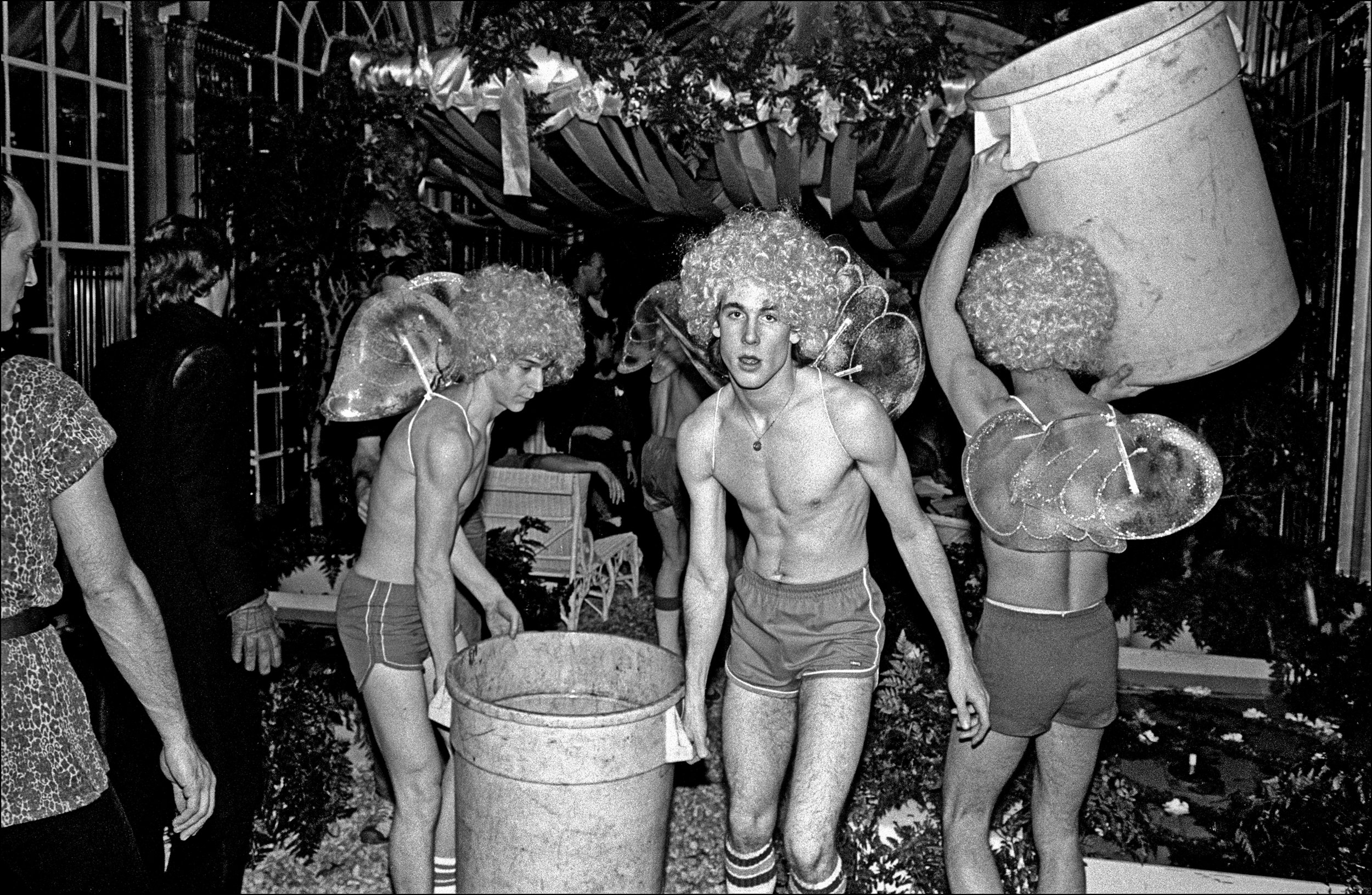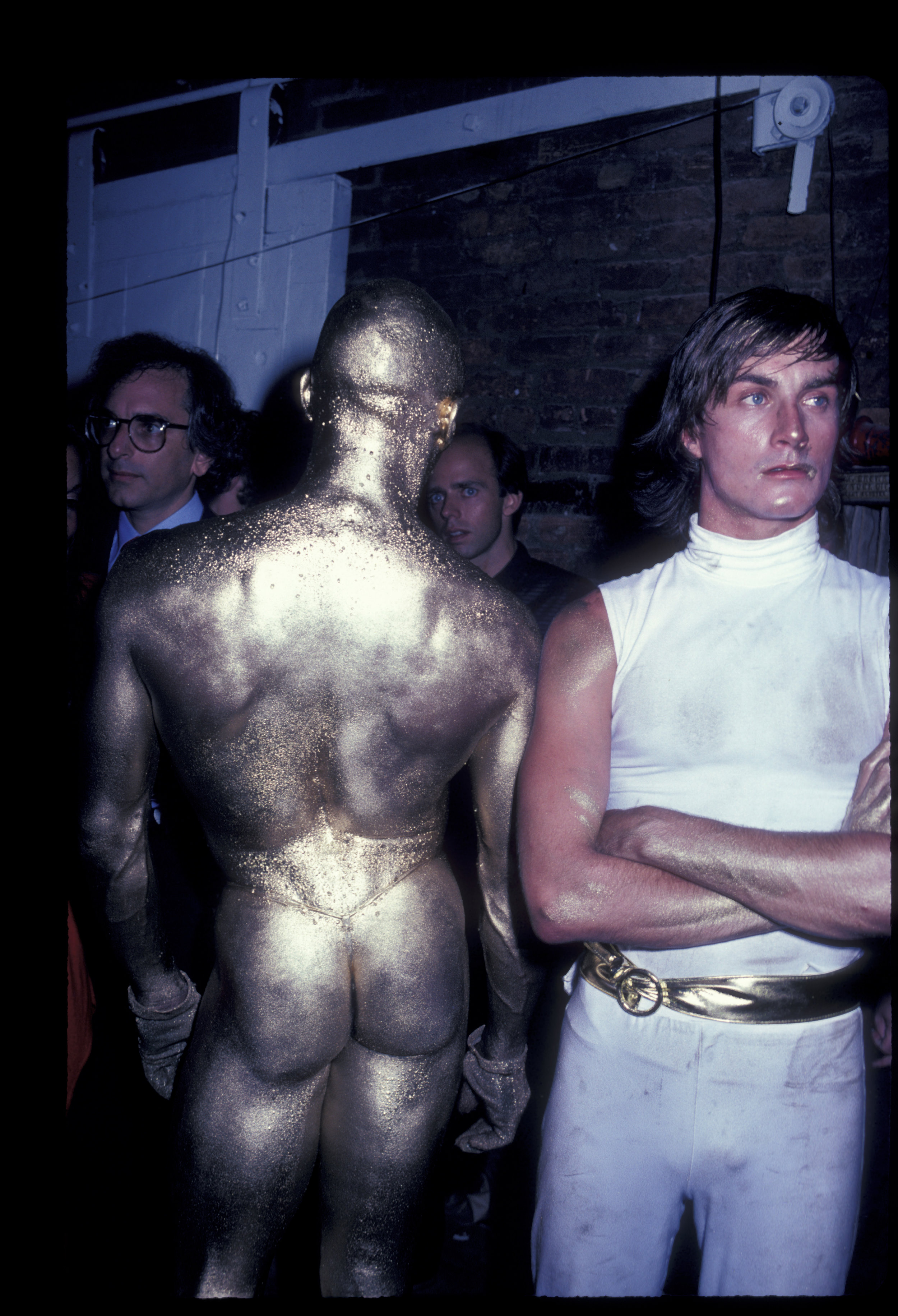Another remarkable treasure from the UCLA Special Collections at the Fowler: the second diary of Anais Nin when she was 12 years old, having just the previous year begun keeping her infamous diaries in Kew Gardens, New York. She had begun the first volume on the boat over from Neuilly, France where she was born to talented Cuban musician emigres.
Her mother Rosa bought the first notebook in the 'hope that it would distract Anais from her fear of abandonment." Anais later said she had begun the diary as a letter to her absent father. But the notebooks proved much more than that. Things were not real to her until she committed them to paper. Her brother said, 'the diary was her indispensible lifeline."
The diaries explored her fascination with herself. We think of her today as one of the first really honest memoirists.
She was still writing in French, until she was 18 when this photograph of her posing as Cleopatra was taken. By then the diary had become a reflection on marriage, career, what the future might hold. "Love me someone," she had told her diary.
Nin went on to become loved and the lover of many men, including Henry Miller, two husbands whom she stashed on different coasts, (She had what she called a 'lie box' to keep her two lives straight) a writer of erotica for money. Though the later diaries and erotica are much more well known, as they were titillating when published, when I saw this one in her perfect, girlish script with the drawing on the facing page showing her window, I was very moved.
All of Nin's original diaries are at UCLA, in Los Angeles, where she died in 1977. They are the only truly unexpurgated versions.
Dreams of Ghost Forest
Very much missing Ghost Forest, Maya Lin's new installation of 49 at risk trees from the Pine Barrens installed in Madison Square Park. Lin has a longstanding practice capturing the evanescence of things from her Vietnam War Memorial to her rolling hills in Storm King to her website whatismissing.org which tracks global climate events. Though her practice is theoretically subdivided into art/architecture/memory, to me, her projects all speak to the fleeting nature of life. She helps us to notice things
Lin has just opened her new library at Smith College after a rocky year suddenly losing her very talented husband Daniel Wolf so this theme has particular personal resonance right now. There are many Maya's Ghosts. The trees are there for 6 months so I hope to catch them before they too slip into the climate ether.
Here in California, you only have to drive a slight way out of any city to see the effects of climate change in situ. The blackened glades and forests and the devastation of our recent wildfires-even with new growth peeking out from under-is a constant reminder of what peril we are in.
Image by Andy Romer courtesy Madison Square Park Conservancy
Bjork's Cornucopia at The Shed: a Phantasmagoria of Utopia
So many connections passed through my mind last night as I watched the premiere of Bjork’s Cornucopia, an original production conceived for The Shed.
It was my first visit to The Shed and I was only able to peek into a couple of the other spaces, so I cannot really comment on them other than to say the space is huge and it has the misfortune to be adjacent to the Hudson Yards garish neon commercial signs and the hulking Heatherwick stairway to nowhere. The whole thing, the hall, the production, the staffing is certainly a massively expensive undertaking and one cannot help but think of all the theaters in NY in dire need of funding.
But once inside the McCourt theater I understood that The Shed was an excellent space for accommodating the visions of people who think BIG. (As an Angeleno I held myself in check from allowing any reflux from the disastrous McCourt stewardship of the Dodgers to affect my reactions. It’s not only arms manufacturer and oil company trustees who should be held to account.)
Architect Liz Diller, who slipped into the performance just after it had begun, and Bjork and her creative team think big and I admire that. We don’t have enough women thinking big in this very fearless way. The McCourt has every production bell and whistle imaginable, and they were used in full measure for Bjork’s grand vision of Utopia.
I confess I hadn’t been to a pop concert in a long time, and I imagine that digital visual is also being used by other performers. But there could be no more immersive production than this one. The Met Opera in New York and Artistic Director Alex Poot’s former digs at the Park Avenue Armory and Madison Square Garden are the only spaces I can think of in New York that could accommodate this kind of production grandeur.
Bjork has imagined a world where children have a true voice. The appearance at the outset of The Hamrahlio childrens choir in front of the stage set that tone immediately. In their Icelandic costumes they welcomed the sold out audience with runes and sopranos that warmed up the vast hall considerably. In fact Iceland is evoked in many ways throughout the performance.
Bjork’s back up performers on stage are a troupe of Midsummer Night’s Dream-ian fairy sprites (all with the Iceland surnames of ---dottir) who can play a mean flute, even if the instruments have been molded into a circle which surrounds Bjork for four to play at one time, and they dance, cavort and lead us into Bjork’s unique world.
Bjork’s other collaborators--all overseen by director Lucrecia Martel--a production designer, Chiara Stephenson who did the magic mushroom-like platforms, a veteran drummer Manu Delago who roves to many stations and alt-percussive instruments (a watery tank a particular favorite of mine), a media artist Tobias Gremmier whose digital projections on a beaded curtain (Four Seasons restaurant anyone?) and a rear wall were a combination of Georgia O’Keefe and Karl Blossfeldt floral stamens and pistils, costume designers Iris Van Herpen who outfitted Bjork first in white puffed balls and a black ruff (very eighties, it reminded me of my wedding dress which was made with the BIG puffy sleeves then in style) and then Olivier Rousteing’s gossamer feathered birdlike contraption, and James Merry who did the many headpieces which were very Klingon-like and mostly obscured Bjork’s face, all combined in this fantasia which begins and ends with Bjork’s vision for our planet.
She’s worried. A dire message about global warming appears on the curtain. The young Swedish girl who began the global school walk-out movement is also given curtain time to make her case that adults are now behaving like selfish, spoiled children intent on wrecking our precious resources.
The production has an Alice in Wonderland-slipping-down-the-rabbit-hole feel but as someone who is not entirely familiar with the Bjork canon, I can only say that sometimes I wished for more Bjork and less production. When she steps out in front of the curtain onto a small platform and into the audience there is a certain raw, unadorned quality that is very meaningful.
Nevertheless, her heart is all over this outsize confection which runs the full month (I hear it is sold out) and her originality and dedication to her work is apparent in everything she sings and every move she makes. Under the Big Top of The Shed, she still manages to emerge as a truly original visionary. I look forward to catching up with the other project spaces soon.
Photos: Santiago Felipe, 2019. Courtesy One Little Indian/The Shed
Lucio Fontana: On the Threshold at the Met Breuer
Lucio Fontana: On the Threshold at the Met Breuer comes at the proper moment. We are all ready to pierce and slash things right now, and Fontana gives us a vision of how we might do that and also produce beauty. What better metaphor for our times?
In his early years, Fontana, an Argentinian-Italian hybrid, made wonderful sculptures with a rare freedom both in form and color also riffing on the Majolica which was omnipresent (they oddly reminded me of Dana Schutz’s new series). His work was popular almost right away and he received a commission on the Life of the Sea, which showed his affinities for the natural world. They were to be totally obscured in the later work.
He is particularly famous for two series that broke through the picture plane.
The ‘Concetto spaziale,’ which were first conceived as screens for the transmission of light, display holes punched in patterns on canvas connecting us to the void, the infinite, the 4th dimension.
The early gallery of these, without chroma, but instead a kind of washed out beige, are so very pure.
I feel like my heart is being pierced. Somehow they made me think of Janis Joplin’s lyric “Take a little piece of my heart now baby.”
Later, he added chroma, glass and stone and the paintings grew larger, but those don’t have the same resonance. There is actually a pink painting that looks like the cavity of the chest—perhaps too literal.
His “Cuts” series was considered his most radical, acts of sabotage painting. These are likely the ones you are more familiar with. Fontana said it was as hard to decide where to put the cuts as anything else he had done, and that he then folded them back and affixed them to the back of the canvas. No more fenestration as with the holes—just violent fissures. Once again, it’s impossible not to think of our contemporary social and political anguish.
A decade later, he had cycled through color and come back to white, using house paint because it was flatter.
Fontana has come back into vogue along with his compatriots Alberto Burri and Piero Dorazio and the mid-century school of Italian painting, design and architecture. Here at the Met we have the reason why.
January 23 - April 14, 2019.
But first a school: SAB students display the Balanchine ethos at City Center
The second of two parts of a City Center Tribute to George Balanchine’s years of creativity at City Center unfolded with all the charm of a performance of the Nutcracker. The evening was structured a bit like a seder, where the youngest has to to ask the important four questions: Why is a Balanchine dancer different from all others?
Arlene Schuler, head of City Center and herself an SAB veteran invited three other veteran NYCB ballerinas and ballet mistresses along with selected students to answer these questions in a show and tell about “the West Point of the ballet world”. These teachers learned from Mr. B himself and could recite him chapter and verse. They have drunk the kool aid. Or rather, the champagne, as metaphors military and bubbly were as resplendent as the dancers.’’
Katrina Killian, head of the early years, Kay Mazzo head of the teen years and Suki Schorer who in the last stages of prep is the arrow which flings these rapid delivery systems of the B method onto the stage showed us the differences in the Balanchine style: rapid, powerful, staccato, attenuated, precise, and inferred all other ballet regimens are more or less second rate. Certainly I can hardly bear to watch the old-school Russians now when the Bolshoi comes to visit.
The important thing as Mazzo said, and where SAB has been largely successful, is engendering “the full circle of training, performing and giving back”.
Here are some of the Balanchine axioms they quoted:
Maintain a pose as if you are holding eggs and don’t want to break them
Keep your body long and stretched
Keep your weight on your toes.
Though musicality is a first priority, it’s the teacher who sets the tempo in class, not the pianist who is to be ‘quieter”
Always face front, spot front during turns, not profile, as if you are offering one cheek for a kiss
Execute certain steps as if they are being “shot from a canon”, or like a “boxer in the ring” or pushed out “like a champagne cork”
Extend your leg “as if you are taking it out of your décolleté of your evening gown” (my favorite)
Move like a bullfighter, this way and then that way
So: a combination of aggression and rigor (West Point, canons, boxers, bullfighters) and delicacies (eggs, cheeks, champagne,) are what makes an SAB student eligible to become a New York City Ballet dancer.
Balanchine took his training from Russia and gradually added jazzy or sexy riffs to his own style. But the students are taught more or less as he was taught in Russia in a method that allows them freedom only as they reach maturity.
The thing is: I believe in this system. I began in this system. I was in the second class of 8 year olds. I didn’t last long as my mother refused to devote her life to my commute but I was there long enough to understand that it was through pain, hard work and serious repetition that we would become the feathered swans I saw in the Moorish theater at City Center as Cecil Beaton’s creaky swan crossed the stage in Balanchine’s “lite” version of Swan Lake. Or really anything else we wanted to be.
I still walk tall, crook my head slightly and turnout, as a default.
Some dancers who were estranged from the company like Suzanne Farrell and Gelsey Kirkland (different reasons but both Balanchine-derived) started their own companies. Other dancers rail at the restrictiveness of the indoctrination.
Coming hard on the heels of a former female SAB student exposing the alleged harassment of two male NYCB dancers (among them Amar Ramasar, one of my favorite dancers) and their subsequent forced resignation, it was instructive to see: the ballet mistresses are still referring to the dancers as ‘girls” in the old school tradition and the men as assets to show them off. Balanchine left some traditions that have not held up in the modern era. Still, I have every hope that the ship is being righted.
Of all the dancers on display, from Children’s division 1 through Daniel Applebaum and Joseph Gorden (newly named soloist and principal two weeks ago, presumably in light of having lost the two male principal dancers) it was Olive Omelchenko in her powder blue leotard from Children’s 1 who made the most vivid impression. Her turnout and body position and her bun, were perfection, her carriage and comportment professional even at 8. Afterwards,I approached the teachers to thank them all. When I exclaimed over Omelchenko, Mazzo nodded her head in agreement. “Just wait ten years,’ she said.
Studio 54: A new film brings back the highs and lows
Nostalgia is a funny thing. Am I regretting the jackets with shoulder pads that added heft but not necessarily strength? How about that picture of me with hair that looked like a magnolia tree? Every couple of years it seems fashion and art loop us back to a decade about which I have very mixed feelings. First it was the 60’s, then the 80’s. Now the 70’s are grabbing hold.
Almost concurrently with a giant retrospective of Andy Warhol’s work due soon at the Whitney comes Matt Tyrnauer’s documentary on Studio 54. Or “Studio” as the owners, Steve Rubell and Ian Schrager and anyone who was anyone referred to it. Warhol hung at Studio. So did Liza Minelli, and Halston, and Bianca Jagger and Capote.
That did not include me. Oh, I don’t mean to suggest I was a victim of the velvet rope. In fact, my boyfriend in college belonged to a fraternity in which Rubell and Schrager were older brothers, already besties, and I met them at events and so it was not impossible to think I could have become a denizen. The journey of these two Brooklyn boys who remained soulmates and partners until Rubell died of AIDS is the film’s narrative spine. I did not know that Schrager’s father was a mobster but it makes perfect sense in light of what eventually befell him. I suppose you can learn the grift at the knee just like woodworking.
But truth be told, Studio 54 terrified me. Walking in there reminded me of Dead concerts only better dressed, or mostly undressed, but with the same lighting and tripped-out sweaty scene that brought back intense acid flashbacks. Representing as it did the age of celebrity mixed with the toxicity of drugs, the scourge of AIDS, and then the revelation that the two owners were crooks, Studio 54 took the temperature of the 70’s with a vengeance.
Club culture, until then decidedly fringe, became mainstream. The place to see and be seen. Dancing--which I did love-- took on an added sexual dimension, a way to hook up, especially if you were gay. The documentary is replete with interviews with the worker-bee non-celebrities: the silent investor, the Rubell brother, the door guy, the lighting guy, the accountant, and a narration provided largely by Schrager who by the looks of it can’t decide if he’s really contrite about his tax evasions, or not. Events, he implies, got away from them. The headiness of being at the epicenter of a certain cultural zeitgeist was too tempting to resist. He almost seems bemused by his follies, his stay in prison.
I’m trying to decide if anyone who did not live through that era will find Studio 54 avant garde or totally retro. Nobody knows who Minelli and Halston are anymore. Nobody knows that Capote totally combusted after his novel Answered Prayers, which contained a infamous chapter on the rich who had supported him, abandoned him, precipitating a fall into alchoholism and drug addiction similar to many of the celebs at Studio 54. How was it to have close friends and colleagues in the culture world get sick with AIDS, keep it a secret until they couldn’t anymore and then die? It was a brutal era, less optimistic than the decade that preceded it, and it gradually gave way to a New York which was all about money.
Tyrnauer, who has had his eye on more intellectual residents of NY as well, does a good job conveying the madness and the mayhem. But in the end,though the ostensible through line is the ‘freedom’ that Studio 54 purportedly made its regulars feel, the documentary made me sad for all the missing persons and not at all nostalgic for this aspect of the seventies when being able to do whatever you wanted began to seem like the scariest thing in the world.
The film opens in NY on October 5 and then rolls out across the country. I’m curious to see how it does outside the NY region.






